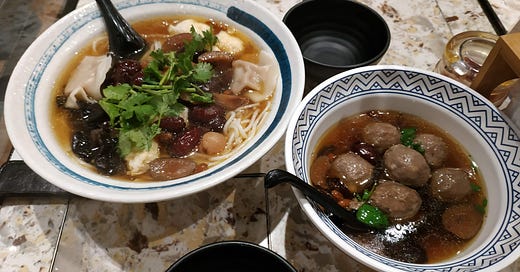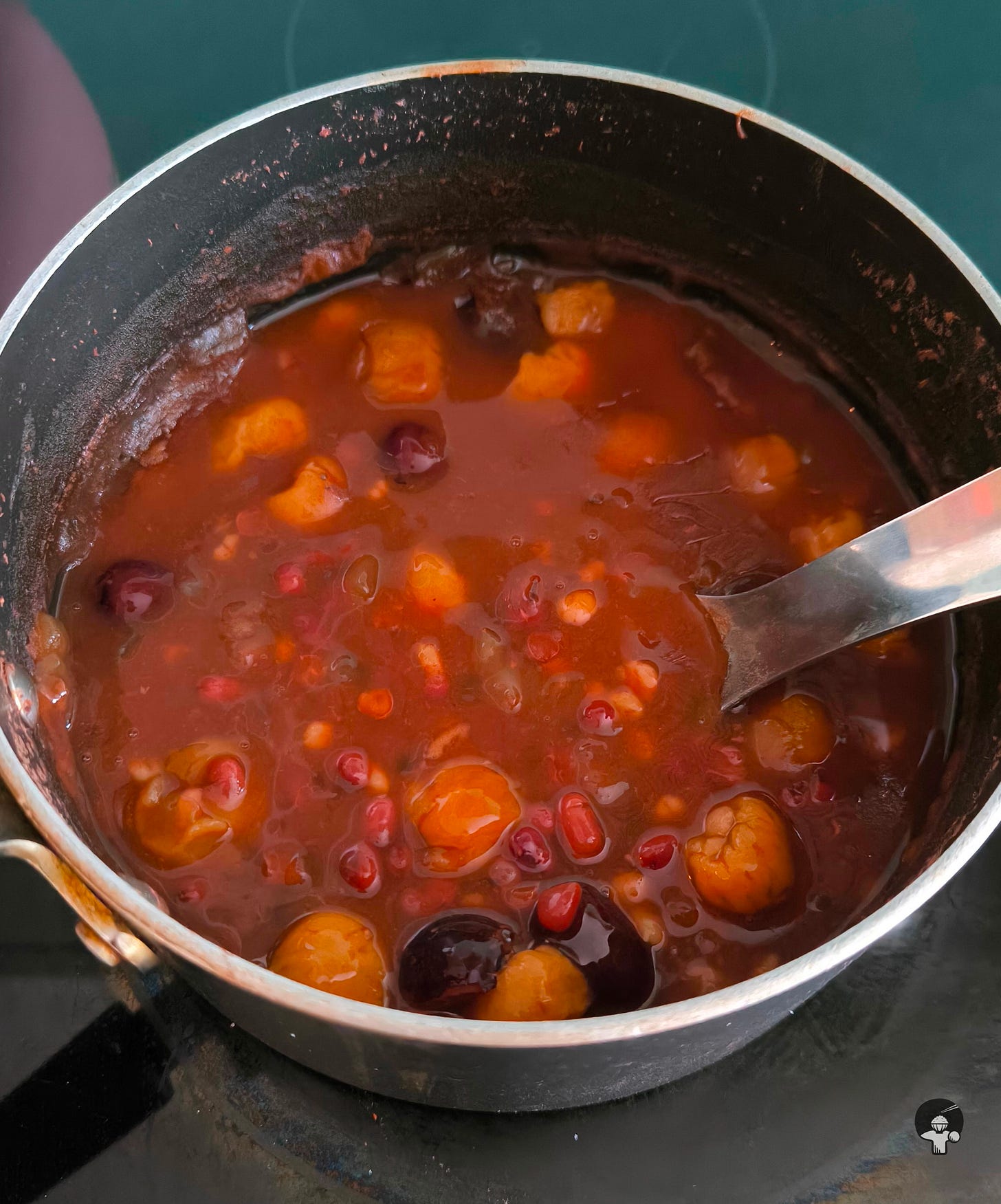The Unwritten Recipes Behind Every Food Photo
Decoding family dishes through senses and photo memories
Have you ever stopped to think why you take photos of your food? We all do it. When the food arrives on the table, someone takes out their phone and quickly snaps a photo of everything before the first bite is taken. In Cantonese, we even have a saying for it: 相機食先 “the camera eats first.”
Are you captivated by the presentation of the ingredients?
Do you want food memories from your travels?
Or do you simply want to remember the occasion?
There’s no right or wrong answer here, we all have our reasons for doing it and that’s completely fine!
For me, it can be all of the above depending on the occasion. The other reason I take photos? To reverse engineer a dish myself when I don’t have a written recipe. If I can visibly see the ingredients and taste the flavours, I can replicate something similar. And I have my parents to thank for that skill.
Our parents’ generation never wrote recipes down. They cooked from memory and intuition, standing beside their mothers, aunties or grandmothers, absorbing every detail through osmosis.
My mum used that same approach when it came to teaching me how to cook.
Whenever I asked her, “How much soy sauce do I add?” the response was always vague. “Just pour until I say stop.”
My favourite response is when I’m making the seasoned soy sauce for Cantonese-style steamed fish.
“How much water do I add to this sauce?”
“Just pour halfway up the bowl and that’s about right.”
It was as if her eyes could measure liquid quantities! Now every bowl I pick up, I can envision an imaginary line at the halfway point.
Precision wasn’t the point. It was all about feel.
My dad, a former chef who ran his own Chinese restaurant in the late 1990s, is the same. Though I guess that’s unsurprising for a self-taught chef. The best thing I learnt to make from my dad? Wrapping siu mai and steamed pork buns. Boy was that easy…said no one ever.
“How long do you let the dough rest?”
“Depends on the weather, if it’s warm it’s faster; if it’s cold you need longer. Look at the dough, it will tell you when it’s ready.”
Talk about abstract.
Yet the flavours of their food were on point most of the time.

Nowadays recipes are very helpful if you’re new to cooking, or cooking a dish from a different cuisine that you’ve never had before.
One of the many reasons that inspired the Asian Athlete Pantry was to be able to document the humble, homecooked dishes I love and preserve tradition. It’s a gift for the Asian diaspora out there - whether younger or older - who like me, love and miss our parent’s cooking. It’s also a way to showcase how these nostalgic home-cooked meals can fuel sports performance for Asian athletes.
Recently, I had lunch with my 93-year-old 婆婆 (grandmother), who is vegetarian. She still cooks her own meals, and her food is consistently good so I’ll eat it whenever I get the chance. Even if her vegetables are overly soft, I’m cool with it because she wears dentures and needs soft foods.
That day, she’d made 紅豆沙 - red bean soup, a Chinese dessert. When I think red bean soup, I think back to family dinners at Gold Leaf Restaurant. At the end of a 10 course banquet, there was a 50/50 chance that the complementary dessert appearing on the lazy Susan would be red bean soup.
I wasn’t a massive fan of it back then, it was always too watery and too sweet. I prefer mine “not too sweet” - that’s the ultimate complement from an Asian parent for desserts by the way.
Since this red bean soup was my 婆婆’s version, I was never in doubt it would be better. Hers was loaded with extra ingredients and just the right balance. Not too sweet. In true Asian grandma style, she insisted I take some home, along with a heap of other things.
As I ate my dessert, I had this desire to want to make it myself. I could visibly see and taste the ingredients that went into the red bean soup, so it was something I could reverse engineer. But for old time’s sake I just had to ask the question…
“婆婆 can you teach me how to make your red bean soup?”
“Get some red beans, pearl barley, Chinese dates, cinnamon stick, add sugar and boil it.”
“What kind of sugar? Rock sugar, or that slab of brown sugar?”
“Rock sugar.”
“How much?”
“Not too much because the dates are sweet too. Get the ones without the pip.”
“You put dried mandarin peel in too? I can taste it”
“Yes, it tastes better with dried mandarin peel. Remember to take the dessert home. Leave me a bit and take the rest.”
I left it at that. My 婆婆’s response was so predictable that I couldn’t help laughing to myself.
That’s how I learned to cook - watching, cooking with my mum beside me, tasting it and tucking the information into my brain somewhere. Now when I cook, there are times where I’d nail the dish, and times I don’t. So next time, I’d be adjusting things until they match the memory in my mind. That’s the beauty of cooking from the heart.
Recipe writing isn’t easy for me, I’m not going to lie. I never really measured quantities using the standardised tablespoons or cups. My measurement tools consisted of: Chinese rice bowls and large soup bowls, Chinese soup spoons or ladles and the Western tablespoon used for eating. For the recipes I share, I’ve had to go back and measure everything properly - it’s probably still not perfect! Chinese cooking is so subjective. How salty, how soft, how sweet… it all depends on your palate.
Now, did I remember to take the red bean soup home? Of course not, I was kind of in a rush. I got home to missed calls from my 婆婆.
“Didn’t I remind you to take the red bean soup?”
“Yes, 婆婆. Sorry I forgot.”
“You didn’t take enough, I put more in your container.”
“Thank you. Put it in the freezer and I’ll come get it next time.”
If this story made you smile, brought back your own food memories, or a memory of learning to cook from your mum or grandmother, I’d love to hear them. What’s a dish you learned by watching without a recipe?



